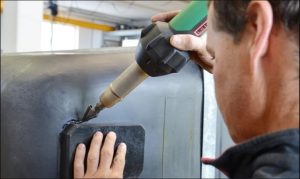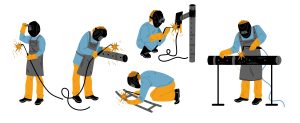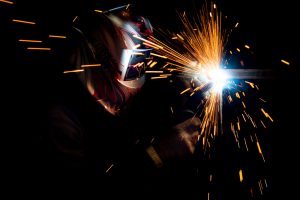When you need to weld metal, a MIG welder is one of the best tools to use. It’s simple, fast, and works well for most metal types. But to get the best results, you should know a few essential tips and techniques.
This guide will walk you through safety precautions, setup instructions, and beginner-friendly tips to help you weld like a pro.
What is a Mig Welder?
A MIG welder (Metal Inert Gas welder) uses a spool of wire that feeds through the machine and melts to join metals. The wire acts as both the electrode and filler material.
It’s ideal for beginners because it creates clean, strong welds with minimal spatter. You can use it for car repairs, bike frames, or even large projects like gates and fences.
Safety Precautions
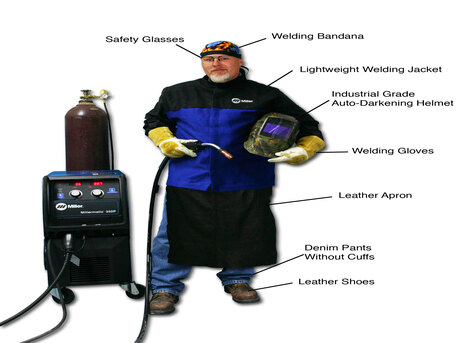
- Before you start welding, safety should always come first.
- Here’s what you need to do:
- Wear protective gear. Always use a welding helmet, gloves, and a fire-resistant jacket.
- Protect your eyes. The bright arc can cause eye injuries known as “arc eye.”
- Avoid electrocution. Keep your work area dry and don’t touch live wires.
- Stay aware of surroundings. Keep flammable items away from the workspace.
- If you work indoors, ensure proper ventilation to avoid inhaling fumes. A respirator mask rated for welding is a good choice.
Tool Safety
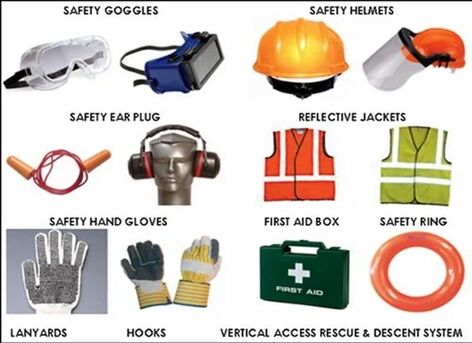
- When using a MIG welder, always:
- Wear safety goggles and heat-resistant gloves.
- Use a respirator or welding mask that filters out harmful gases.
- If welding outdoors, ensure your mask is rated by NIOSH for best protection.
These steps help prevent exposure to toxic fumes and dust.
Settings for Mig Welding
The right settings make a big difference in weld quality.
Here’s how to adjust them correctly:
- Wire speed: Set this properly to prevent overheating or uneven welds. Too fast causes spatter; too slow weakens the joint.
- Wire feed speed: Controls how quickly the wire moves through the gun. Faster speeds create more heat, while slower ones give smoother results.
- Voltage: Voltage controls how hot your arc is. High voltage creates deeper penetration, but too much can burn through metal.
Read Also What gas for MIG Welding Aluminum, How to spot weld with a MIG welder
How to Start a Mig Welder
Here are a few more ways to improve your welding results:
- Use flux-core wire when welding steel. It works well on rusted or dirty surfaces.
- For aluminum, use the correct gas and wire type. Maintain proper voltage to prevent burn-through.
- Keep your welding tip clean and replace it if it becomes worn.
- Always store your gas bottle upright and away from direct heat.
See more: 8 Best 110 Volt MIG Welders, 5 Best MIG welder under $500, 10 Best Dual Voltage MIG Welders
Other Tips & Tricks for Using a Mig MIG Welder
Here are a few more ways to improve your welding results:
- Use flux-core wire when welding steel. It works well on rusted or dirty surfaces.
- For aluminum, use the correct gas and wire type. Maintain proper voltage to prevent burn-through.
- Keep your welding tip clean and replace it if it becomes worn.
- Always store your gas bottle upright and away from direct heat.
Consistency and patience are key. The more you practice, the cleaner your welds will look.
Conclusion
A MIG welder is a powerful yet easy-to-use tool. By following the safety steps, adjusting your settings correctly, and practicing often, you can master the basics quickly.
With time, you’ll gain confidence and improve your welding skills with every project.
Note: ElectroWeld is reader-supported. If you click a link and buy something we may receive a small commission at no extra cost to you., learn more on disclaimer.

Walton M. Edwards was born in 1994 in a coal mining town, he has worked as a welder, a hardware salesman, and as a pipe fitter and has been employed as a laborer for about fifty years. Walton is a native of Wabash County in Indiana, but he now resides in Bloomington, Indiana.

